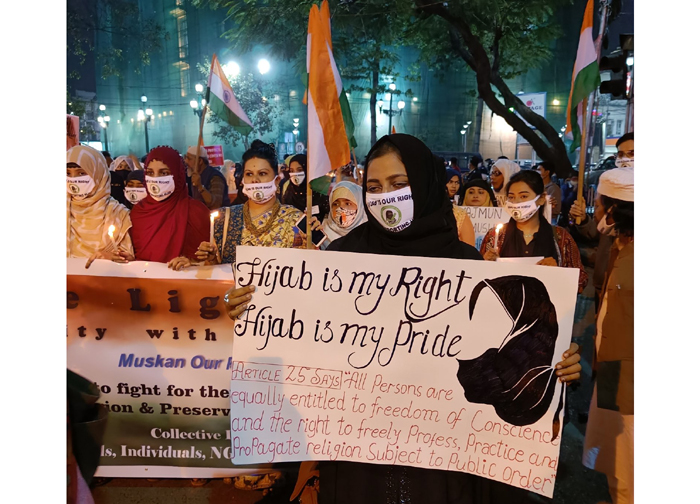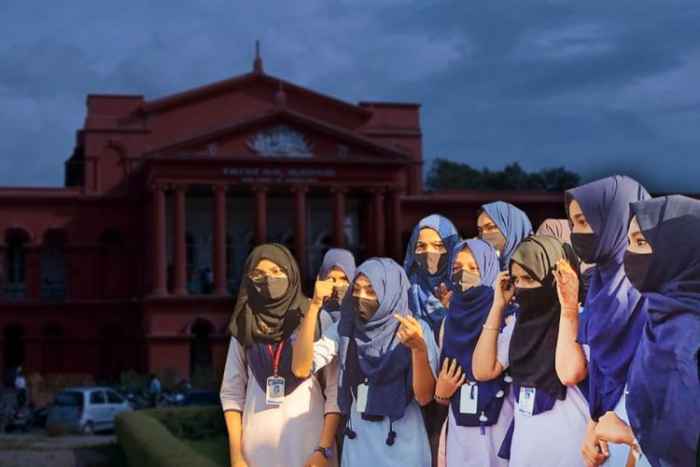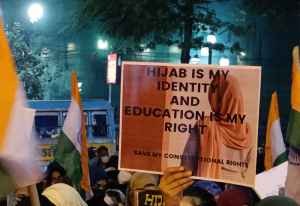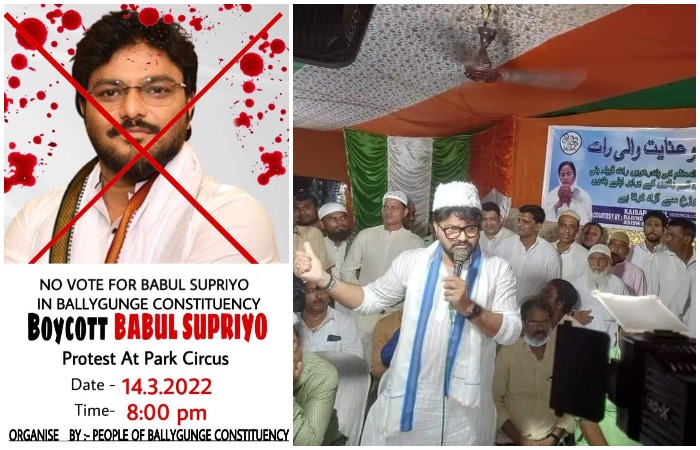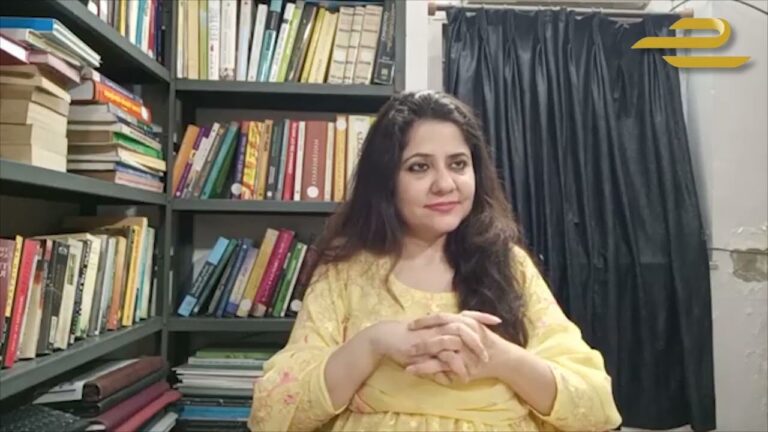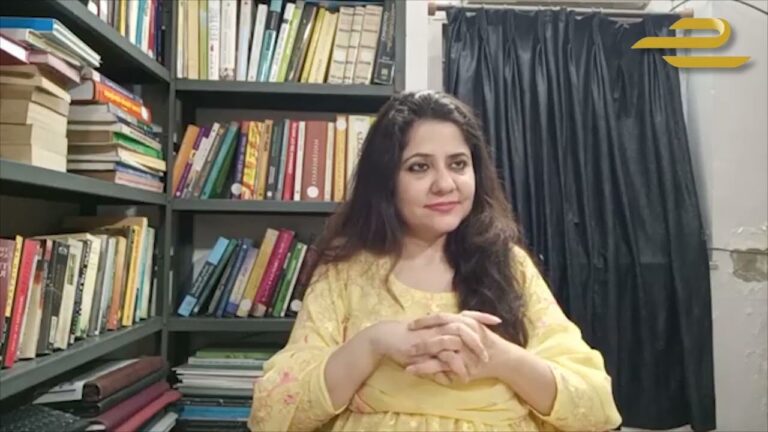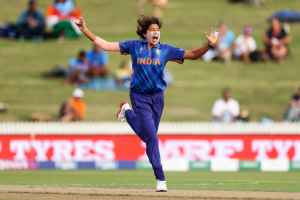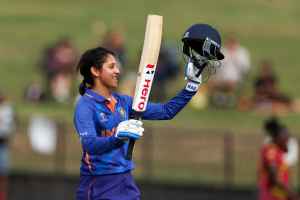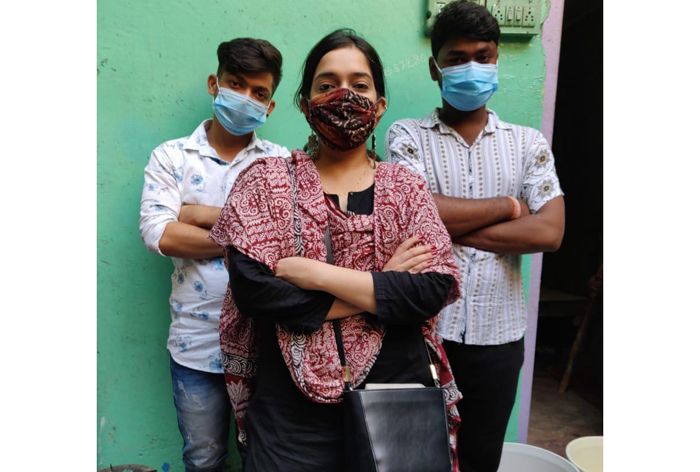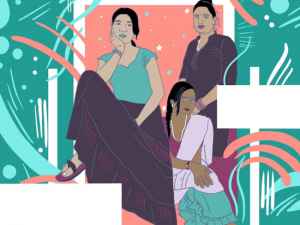The hijab controversy, after a robust raging across the country, culminated into the judicial dismissal of the very practice ruled out by the Karnataka High Court by saying that the hijab was not “essential religious practice in the Islamic faith.” The verdict was somehow predictable at the outset of it reaching to the HC elicited from experiences of the previous Muslim-related judgements like Babri masjid. When the whole country normalizes racial hatred against a particular community and their very existence, verdicts like this in a BJP ruled state are clandestinely comprehensible.
Following the Karnataka hijab row, another hijab controversy erupted in a non-BJP state-run educational institute in the district of Murshidabad in West Bengal in the same week. The local police administration took 18 out of the hundreds of protesting Muslims in their custody. But, even after the arrests of the innocent protesters and the ban of hijab by the Karnataka court, the streets of Kolkata did not witness any protests, except a few social media posts or press releases, which has a traditional imprint of processions by the intellectual belts of the State against such issues. Maybe the polite Bengali bhadrolok (civil) society has preferred silence to an outcry since the prevailing issue is related to Muslims- the other. Surprisingly, with the establishment of Taliban rule in Afghanistan last year, the Hindu-dominated Bengali bhadrolok society of West Bengal became increasingly concerned about the safety of Afghan women. The bhadrolok babus wholeheartedly protested against the Taliban superseding.
Two stories
Let us look at two different incidents outside the row. Firstly, probably in 2006, Mr. Saidul Islam of Bargarhchumuk village of Shyampur police station in Howrah district somehow went bankrupt due to his business reasons. He agreed to donate one of his kidneys in exchange for eighty thousand cash noted in a newspaper advertisement to overcome his bankruptcy even after his family disagreement. The patient whom he gave his kidney to was a Hindu by religion. The family of the patient regarded him as God for his great work. But after giving the kidney, when Saidul saw that the family was economically so weak that he did not ask for the money, the price of his kidney. One day, Saidul saw at a distance that the wife of the patient was cleaning the place with dung water where he was sitting at once he departed from their house.
Secondly, in 2019, a student named Mujahedul Islam Khan from a village of West Medinipur district in West Bengal got the opportunity to pursue his Masters in Chemistry at Presidency University in Kolkata. The village is approximately 150 km away from Kolkata. Though Mujahedul took admission at the University, his candidature in the said programme was canceled due to certain rules of the University which mandate regular attendance at classes for one month in a row. He could not attend classes traveling from his village regularly for a month. He had been looking for a mess or a rented house in the area around the university, but he did not get anywhere. It’s not that there were no mess or rent house available there in the locality. His non-Muslim classmates very easily found it and settled there. As the owners of the mess houses or rent houses prefer not to offer boarders to the ‘Muslim’ students, he did not get any.
Saidul became immensely popular for donating his ‘Muslim’ kidney to a Hindu. The bhadrolok Hindu society garlanded him with praise, honor, and recognition exemplifying him as an epitome of communal harmony, of Hindu-Muslim brotherhood. Like Saidul, the cases of the self-sacrifices of Muslims for Hindus are rampantly visible in the mainstream newspapers or other media outlets of Bengal nowadays. But there are hardly any news headlines about the religion-based social nuances that Mujahedul-like rural Bengal Muslim students confront as a normalized social order either in the heart of Kolkata or in Burdwan or Midnapore cities. Instead, such incidents continue as socially legitimized unwritten law establishments.
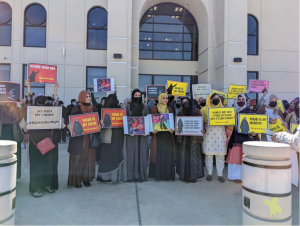
Bhadrolok and having the belief of being ‘the custodian of Bengali nationalism’
Like Mujahedul, the Bengali Muslims of the state find no place in this self-contradictory one-sided ‘Bengaliness’ elicited from the ostensibly self-proclamation by the bhadrolok Hindu society as ‘the custodian of Bengali nationalism’. The relentless cultivation of the socially established division not only pierces the very foundation of Bengali nationality with criticism but also stigmatizes it. Naturally, the question arises on the tradition of Bengali nationalist thought, on its ideological doctrines. It is also natural to question the much-cherished ideology which ossifies ‘we’ and ‘other’ narratives and ostracizes one Bengali from another foregrounded on religious belief culminating in the worst situations.
The secularism of West Bengal was founded on this contradictory attitude of the Hindu majority towards the minority. This foundation is surrounded by a larger moat. The Hindu majority lives inside the moat. Racism or Brahmanism is the ideology based on the traditional Hindu caste system that the majoritarian Hindus follow to maintain their hegemony in the society. To enable racism to be socially acceptable and in the name of running a fair society what hails is a nationality or Bengali nationality, in imitation of European ideology, charted out by relying on conventional Hindu fictional history and myth. So eventually, Muslims have no place in this nationality. As a result, the extent to which the glory of the early age or modern age of Bengal is discussed through the writings, speeches, and statements of the majoritarian society, the reign of the Muslims is typified as a dark age in that same spirit in the pages of their history.
Outside their trenches remain the ‘low’, the ‘tribe of barbarians’, the ‘Other’—indigenous, the Dalits, and many other low castes including Muslims. Secularism or the hyped Bengali nationalism is weaponized to maintain, control, and, above all, to establish the dominance of Brahmanic racism upon these ‘lowly’ ‘tribes of barbarians’. One can only enter inside the moat from outside if one nurtures Brahmanic racism and promises to take Hindu racism forward. However, once entered, the outsiders belong to the bottom of the majoritarian hierarchy inside the trenches. They see appeasing the majority as the only statutory duty. Just as the bhadrolok Bengali Hindus groveled the British in colonial times, this class of people carries on that legacy in the name of ‘intellectual’, ‘social-conscious’ personalities.
This concept becomes clearer when one looks at the social ‘recognition’ of Bengali Muslim writers in post-independence Hindu-dominated West Bengal society. Bengali Muslim writers who have reached the pinnacle of their literary fame have rooted their literary creation in the prevalent Brahmanic racist narratives. They have pushed back ‘Islam-Muslim-Shariat’ issues more than have worshiped the Brahmanic Bengali nationalism and secularism established by the majority. On the other hand, the Bengali Muslim writers who have kept the essence of ‘Islam-Muslim-Shariat’ at the center of literary work have disappeared from recognition.
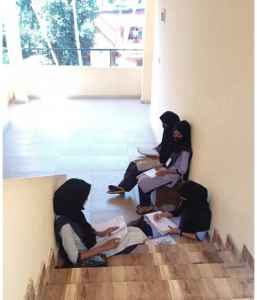
The seeds of the events
Although the period of the events of Saidul or Mujahedul is more recent in the present context, the seeds of these events have been germinated long ago. It was germinated when Raja Ram Mohan Roy, Ishwar Chandra Vidyasagar had labeled ‘Hindu Religious Reform’ as a ‘Bengal Renaissance’; it turned into a fresh and soft green leaf from the sprouted seed when the Hindu majoritarians accepted the newcomer British invaders as their friends and ascertained Muslims as their enemies. This leaf became an evergreen tree of ‘Muslim excision ideology’ initiated with the literalization of ‘Muslim-hatred’ sentiments through Bankimchandra, Ishwar Chandra Gupta, and their irks writings and with its establishment as the founding ideologies of the National Congress and the holy temples for Savarkar’s Hindutva politics. The ultimate result of which was realized after about two hundred and fifty years with the partition of Bengal in 1947.
Despite 34 years of a vainglorious secularist Left regime, Muslims in the state have been seen as mere ‘vote banks’ or mercenaries to prolong their rule. Bengali Muslims are the most backward class during this reign- politically, economically, socially, health, education-employment wise. The Sachar Committee Report has very clearly pointed it out. But the most terrible loss for Bengali Muslims in this regime is their cultural decline. It took place with the imposing of majoritarian narratives, religious beliefs, customs, practices on the minorities and by burying the beliefs, narratives, habits, thoughts of the Bengali Muslims by consuming them the syrup of ‘secularism’. That is why even in the so-called secular left reign, the celebration of Saraswati Puja in schools, colleges, and universities and asking for donations in the admission receipts for that, has become informally legal. The silhouette of which is still going on unquestionably. In addition to it, whereas, the closure of educational institutions for a month and a half has been followed without hesitation for the celebration of Durga Puja, the branding of ‘one day off is enough’ has been established for the celebration of ‘Eid’ or ‘Qurbani’.
Bengali Nationlism
One of the unique manifestations of the hypocrisy of Bengali nationalism is the observance of Durga Puja by the majority of Hindus. Durga Puja means ‘ours’ – i.e. for Hindus-Muslims, for all irrespective of religion. Durga Puja is a religious festival of all Bengalis. What a slogan! ‘Religion is for individuals but festivity is for all, ‘the biggest festival of Bengalis is Durga Puja’ etc. But when it comes to Eid or Qurbani, it only means – to them, to Muslims only. The very Bengali nationality confidently manifested during Duga Puja or Saraswati Puja which was hypnotized as ‘ours’, the same Bengali nationality evaporates at once as ‘their’ festivity during Eid or Qurbani.
Again, those who are sparsely influenced by the exact communist ideology of equality are a little different. The day of Eid and Qurbani means for them to go to the house of their Muslim friends and eat Vermicelli Kheer or biryani. For them, this is the embodiment of an unbroken bond of harmony between the two communities. But when one of the family members of that Muslim friend, or a co-religionist is branded as a terrorist by the state for no reason, gets killed after years of imprisonment and decay, there wouldn’t be any trace of those bearers of harmony to call a spade a spade. The narratives of the so-called well-wishers of harmony then get changed.
At this constructed atmosphere of hijacked Bengali identity whereby ‘Bengali’ is meant to be a Hindu and a Bengali Muslim is strictly demarcated to his ‘Muslim’ identity only, the Bengali Muslims like Mujahedul have to face the same ordeal as Mujahedul did when they enter to Kolkata, Burdwan, or Midnapore like cities from the rural localities for their study or employment purposes. Many Bengali Muslims like Mujahedul are deprived of their golden opportunities in this caste rhetoric of the society when they heard, ‘Are you a Muslim? I thought you are a Bengali ‘ and “We do not give rent to Muslims.”
Muslims’ imprints on Bengali language and literature
Bengali language and literature which is now recognized as a single language and literature before the world, was shaped by the Sultanate rulers of Bengal. Bengali language and literature were fully established under the patronage of the Sultans during the reign of Sultan Sikandar Shah (1359-89) to Nusrat Shah (1519-32). With their financial support and the encouragement of the royal court, the foundation of literary practice in the Bengali language was laid. Even in the sixteenth and seventeenth centuries, when there was no concept of mother tongue in South Asia-it came in 1890, Muslim sultans, writers have shown their self-awareness towards their language by showing a tendency to write in Bengali. Shah Muhammad Sagir, Sayyid Sultan, Muttalib among others, thus were the first to emphasize the value of literary practice in their Bengali mother tongue. On the contrary, the attitude of the majoritarian Hindus towards the Bengali language is evident in the words of Bengali historian, Dinesh Chandra Sen. According to him, eighteenth-century Hindu scholars had the thought, “If a person hears the story of the Eighteenth Purana or the story of the Ramayana in the language of the common men (in Bengali), he will be thrown to Rourava hell.”
Also, what the majoritarian Bengali Hindus drum as the epitome of communal harmony on the twist of Bengali nationalism is also due to the unprecedented devotion of those sultans towards the Bengali language. The Hindu-Muslim interconnectedness was most noticeable during the 1204 to 1764 period, which is known in Bengali literature as the Middle Ages. Many non-Muslim writers had cultivated their literary work under the supervision of the Sultans along with Muslim writers. Chandidas, Kritibas, Parameshwar Das were some of them who had produced the greatest of works written in Bengali under the patronage of the Sultans. Also, the translation of Hindu epics from Sanskrit into Bengali was accomplished for the first time on the initiatives taken by the sultans. Because of this, the translations of ‘Mahabharat’ by Kashiram Das, ‘Ramayana’ by Kritibas into Bengali under the tutelage of Sultan Jalal Uddin, and Maladhar Bose had written his ‘Srikrishna Vijay’ in Bengali in 1480 under the supervision of Sultan Rukunuddin Barbak Shah. The Middle Age of the Bengal history which had witnessed the foundation stone of the Hindu-Muslim interrelationship and the foundation of tolerant Bengali nationalism drafted through the religious works of literature written by Chandidas, Kashiram Das under the guardianship of the Sultans, that tolerant Bengali nationalism is at stake now.
The Bengali language which was tried to be strangled by the usurper Sen Kings from Karnataka during their reign of Bengal was enlivened by Sultan Ilyas Shah, Bakhtiyar Khalji gave the geographical map of the Bengal territory; Shah Muhammad Sagir, Alaol, and others gave the language life through their literary works. But even after these historical anecdotes, majoritarian Hindus today do not regard the Bengali language as the language of the Bengali Muslims. To them, Muslims are ‘outsiders’. If Bengal feeds such narratives as the source of the Hindutva ideology of the country, then that tradition of Bengal which was the arena of coexistence of historical Hindu-Muslim cohesion vanishes under the siege of artificially established hatred. As a result, Bengali nationalism is crippled with multitudinous entities- geographical, linguistic, and entity of interconnectedness. The hijab controversy in the school of Suti locality is therefore only a fragment of that primitive hatred-seed of the eighteenth, nineteenth century.
It’s better to accept the ‘outsider’ theory as easily as possible for the greater interests of our Bengali nationality. If Aryan-Brahmins from West Asia can come and become Bengalis, if the Kings of the Sen Dynasty from Karnataka can rule Bengal after their invasion and become Bengalis, why can not Muslims become Bengalis? Moreover, according to the 1871 census of Bengal, only 1.52% of Muslims are expatriates, the remaining 98% are the aboriginals of Bengal. So, all the Muslims of Bengal are Bengalis. This fact will keep our Bengali nationality intact if we renounce the 19th century rhetoric of Hindutva politics proliferated by Bankimchandra and his clans, the obsequious Bengali Hindus employed as clerks in British imperialism. It will further strengthen the thread of the coexistence of our mutual harmony that will eventually facilitate us to save Bengal from cow belt politics and free the young children of Bengal from turning into saffronized forces. As much as the majority Bengali Hindus will ensure their acceptance over the minority Bengalis, Bengali nationalism will be stronger. If the behavior of the Hindus toward the Muslims is taken as a mirror in the interest of the triumph of Bengaliness, the triumph of Bengali nationalism will be emboldened. But if the opposite thing happens, it will only widen the gap between ‘us’ and ‘they’-Hindus and Muslims.
The views expressed here by the author is personal


